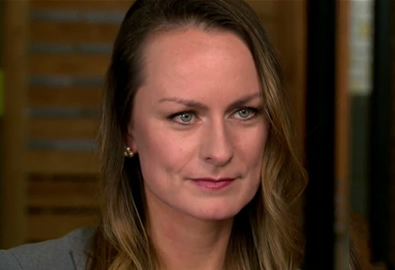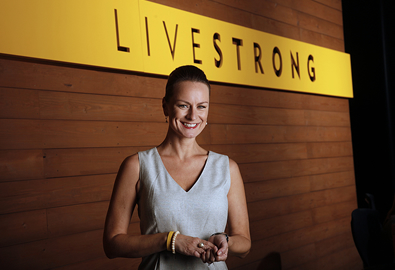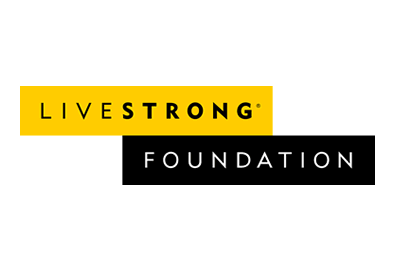The LIVESTRONG Foundation’s 100 team members hardly expected to see Lance Armstrong scant hours before his much-publicized sit-down with Oprah Winfrey in January. Some had expected never to see him again, given his resignation from the cancer non-profit’s board in the fall of 2012. But as the social workers, health policy experts and cancer counselors cautiously welcomed the organization’s founder, they saw someone they barely recognized—a humble, visibly shaken man struggling through emotion to say one thing: I’m sorry. I wanted to tell you that in person before you saw it on TV. You deserve that, after all you’ve been through because of me.
The events leading up to that day were heartbreaking and chaotic for the LIVESTRONG Foundation team. The top-rated non-profit had struggled for nearly three years to keep focus squarely on its work—providing cancer patients with free services that increase quality of life and improve outcomes—as the scrutiny around Lance’s cycling career became more and more intense. Then, in October 2012, a damning report by the U.S. Anti-Doping Agency dispelled any remaining doubt that Lance had misled the world, as well as his colleagues at the Foundation. The board of directors encouraged him to consider resigning all official ties. And Lance indeed stepped away, leaving behind a legacy as one of the world’s best-known and most effective cancer advocates.
He also left behind the 100 people making the LIVESTRONG Foundation vision a reality, working every day at an organization as far removed from the world of cycling as one can get. These people were—are—devoting their lives and careers to this cause. So what now for them, and for the cause? Can people embrace the Foundation’s mission—serving cancer patients today—without a famous face? Is the non-profit nimble enough to rally?
For the public servants at the Foundation, these are not abstract ponderings. They are a daily and very personal reality, one they face without a handy playbook of previous organizations’ experience. Instead, we are writing our own playbook for how to show the world, and reassure the patients who turn to us for help, that the Foundation is in it for the long haul:
- Look three years out, not 12 months…—The next 12 to 24 months will be tough, no doubt about it. But the true tale of the Foundation’s survival will not be told in one year. The non-profit has outdated perceptions to overcome. Trust to build. Supporters to reassure. In many ways, it is starting from scratch. That takes time, dogged commitment and enormous effort. But because of good fiscal planning, the Foundation has a strong financial picture that gives it the space to reintroduce itself to the world while continuing to fund the free services that help today’s patients preserve fertility, get insurance and afford treatment. So to anyone inclined to draw final conclusions about the Foundation’s success or failure come November 2013, the one-year anniversary of Lance’s resignation, hold your horses.
- …But operate as though it’s now or never—Many non-profits or corporations who have just endured a staggering amount of often-negative global attention might consider now a good time to go dark. Rest up. Let the dust settle. And then re-emerge with a slick advertising campaign that seeks to make people forget all that bad stuff. That’s not our style. For one thing, we’re a non-profit. Most of our marketing dollars are devoted to advertising our free services to patients and providers, not burnishing our own image. And we recognize that it’s now or never. In a year, if we have stayed silent, people may assume we’re done. We have to show that we’re still serving cancer patients and survivors who need help now—and who, by the way, might like to see that we’re fighters too, just like we help them to be. We’re one of the top charities in the U.S., we aren’t remaking who we are and we are going to tell you all about it AS LOUD AS WE CAN, wherever we can.
- …And clearly define the mission once and for all. The LIVESTRONG Foundation’s mission is to achieve better outcomes for cancer patients and survivors now. To get them through the financial, insurance, emotional and practical challenges that no patient has the energy to tackle alone. Opinion research shows most people believe the search for a cure is most important in the fight against cancer, and it is important. But for 14 million people Americans who have the disease now, investing in research that might produce a breakthrough in 15 years doesn’t provide the support that can make a difference in the life they live today and even how long they live it. It doesn’t help them get a second opinion, understand their diagnosis, know their rights or deal with cancer’s heavy emotional toll. Not to mention that, for many in the U.S., the cure already exists, but does them no good unless someone can help them figure out how to afford it. So there are two parts to the equation: Improving outcomes for today’s patients and investing in research to help patients of the future. Our part is today.
A frequent question I get is, “How’s everyone at the Foundation doing?” The truth is, it’s been rough. None of us anticipated the rapid and radical changes that are now the new normal. But we’re dusting ourselves off and keeping the focus where it should be: helping people with cancer today.


